Day 1 of a three day Late Spring Tour today. We spent the day up in NW Norfolk. It was meant to be a sunny day, a bit breezy but nothing too bad. It turned out to be very windy all day, with gusts up to 36mph around the Wash, and clouded over late morning too, though at least it was dry.
We started the day at Snettisham Coastal Park. When we got out of the car and felt the full strength of the wind, we knew it would be a challenge here this morning. Still, we set off to see what we could find. A Greenfinch was singing and doing its butterfly display flight over the bushes by the entrance and we heard the piping calls of a couple of Bullfinch which flew off deeper into the bushes as we approached. A Chiffchaff was singing from the wires and a Common Whitethroat was singing too, from deep in a hawthorn.
Cutting across on the path through the reeds, to see if we could find any shelter, we could hear first a Reed Warbler and then a Sedge Warbler singing. A Cetti’s Warbler shouted at us from deep in cover. It was fairly windy here, but even more so when we got up onto the inner seawall.
At least the Swifts were enjoying the wind. There were quite a few over the Park today, flying low trying to find insects, and a couple of them came zooming low past us as we were up on the seawall.

As we started to make our way north along the inner seawall, we noticed a bird fly up out of the trees and flutter up higher into the sky. It was a Turtle Dove, one of the birds we were hoping to find here, and it was doing a display flight. It towered up and then glided down, disappearing from view in the bushes.
A short while later, the Turtle Dove did a display flight again, but this time landed high up in a tall willow. It was rather distant, but we got it in the scope and had a quick look at it. We made our way a little closer, and took the path down off the seawall to where it was a bit more sheltered. Unfortunately, by the time we got there it had disappeared. We walked on north through the bushes. A singing Willow Warbler was a nice addition to the day’s warbler list.
When we got to the cross bank, we climbed up onto the outer seawall to have a look out over the Wash. It was still some time before high tide, but the mud was already completely covered – presumably the north wind was pushing the water in. We could see a large roost of Oystercatcher further up, gathered on the beach like a large oil slick. Several Gannets were flying up and down offshore, presumably blown into the Wash on the wind.
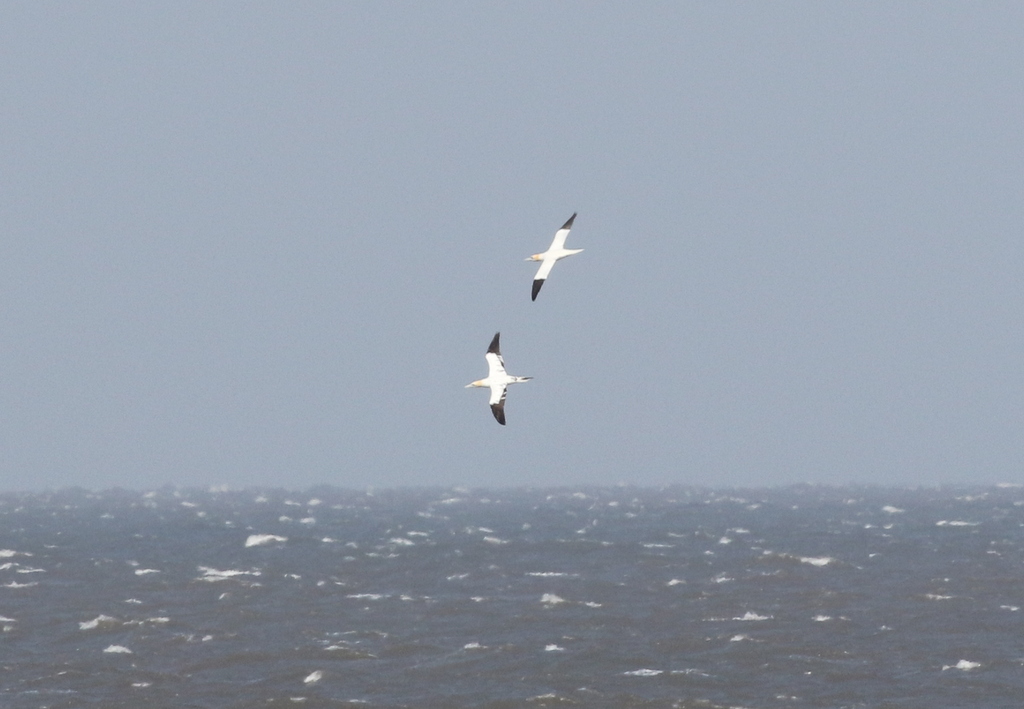
A couple of Lapwing, several Shelduck, an Avocet and another Oystercatcher were all we could see on the pools to the north of the cross bank. Making our way over to the inner seawall again, Ken Hill Marshes provided just a few Greylag Geese and a pair of Gadwall. A Grey Heron flew past.
Surprisingly, given the weather, we saw quite a few butterflies and dragonflies. A Green Hairstreak was basking on a bramble leaf and a Common Blue perched up nicely on the vegetation too. A Hairy Dragonfly hung on the gorse right by a narrow path and didn’t fly off even as we walked right past it, presumably having found a warm spot out of the wind.

We started to make our way back south, through the bushes initially where it was more sheltered. We came across a family of Stonechats, the adults perching on the top of the bushes alarm calling, while the juveniles hid in the vegetation below. When we got up onto the inner seawall again, we stopped to talk to another birder walking the other way and a Turtle Dove flew past just below us.
Once we got back to the car, we decided to try something different. With the wind blowing the tide up into the Wash, we headed down to the hides at the pits to see if it had pushed any waders in with it. As we made our way in along the track, a few Sanderling flew up along the tideline and dropped on the shore together with a smart summer plumage Turnstone. A Ringed Plover on the beach was guarding a single very young juvenile, no more than a ball of fluff on stilts, and chased off anything which landed close by. A drake Pintail was sleeping on the edge of the water on the pit the other side.
When we got down to Rotary Hide, we could see there was still some mud left uncovered by the tide, out in front, and there were lots of waders out there. We took shelter in the hide and set about looking through them. Down towards the front were lots of smaller waders – an even mixture of black-bellied Dunlin and lots of white-bellied Sanderling in a bewildering variety of different plumages. There was a smart rusty summer plumage Bar-tailed Godwit in with them, and a few more brown ones further back.

Just beyond a large gathering of Oystercatchers was a big group of Grey Plover. Most of them were looking absolutely stunning now in full summer plumage, with black faces and bellies, bright white around the rest of the head and neck, and black and white spangled upperparts. There were even more Grey Plover on the mud much further out into the Wash, a huge flock mixed with lots of Knot too.

A pair of Avocet on the mud below the hide rounded out the waders here. There were also a few terns – several Common Terns flying backwards and forwards in front of the hide, calling noisily, and a pair of Little Terns further out, over the edge of the water. We had a quick look out on the pit behind us too. Apart from all the gulls and terns, the main thing of note was two drake Wigeon on the water at the back.
It had been well worth making the trip down here, but it was getting on for lunch time now, so we headed back to the car and round to Titchwell for the afternoon. After lunch, we made our way out onto the reserve. As we came out of the trees, a male Marsh Harrier flew right over our heads and out over Thornham Marsh. There is no shortage of Marsh Harriers here and we saw another two or three out over the reedbed too.
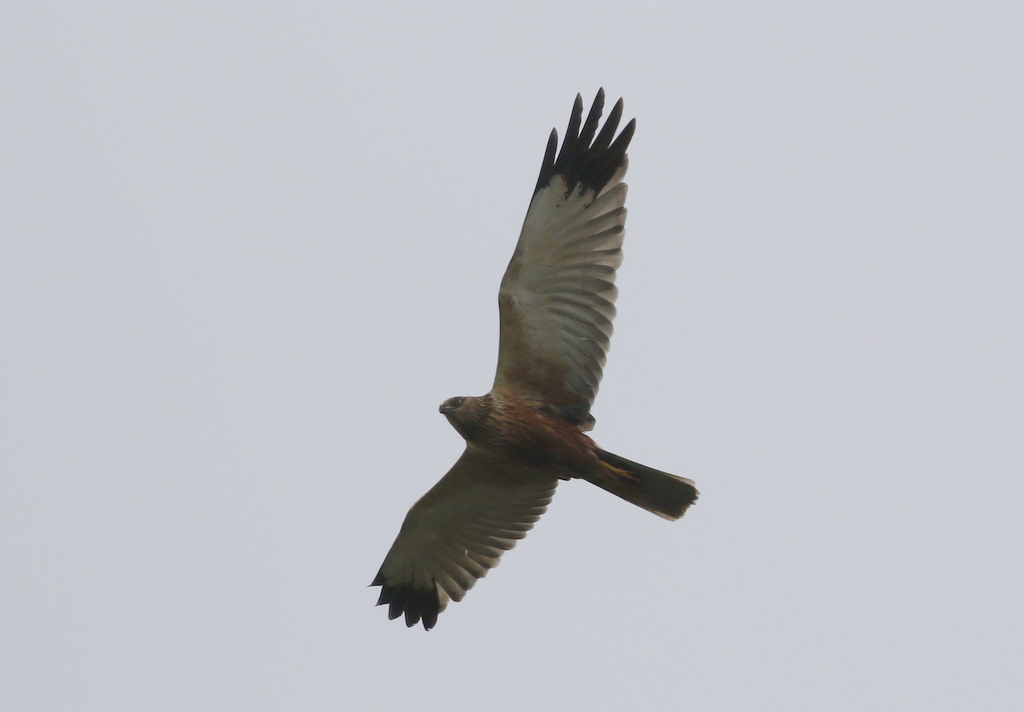
There was not much to see on the Thornham grazing marsh’s former pool, but a Spoonbill circled out over the saltmarsh and dropped down where we could get a quick look at it through the scope, before it walked down into a ditch and disappeared. It popped up a couple of times more briefly, as we walked on.
A couple of Reed Warblers were singing from the reeds beside the path, but keeping well tucked down out of the wind. We did see one or two flying across the small pools, but they dived swiftly into cover.
We had not expected to see any Bearded Tits given the wind today, but when we heard some pinging calls, we turned to see a female fly in and drop straight down into the reeds nearby. A few minutes later, she flew again and disappeared further back. Then a male Bearded Tit started calling from the reeds further along the path before flying up and coming straight past us.
There were lots of Common Swifts hawking for insects out over the reedbed pool. A drake Red-crested Pochard swam out from the reeds and out into the middle of the water. A Little Grebe laughed at us from the edge of one of the channels.
Given the wind, we thought we would head straight round to Parrinder Hide and check out the freshmarsh from there, but half way along the path we got distracted. A pair of Avocets were feeding just below the path, sweeping their bills from side to side through the shallow water, and when we stopped to look at them we noticed a Little Ringed Plover on the nearest island.
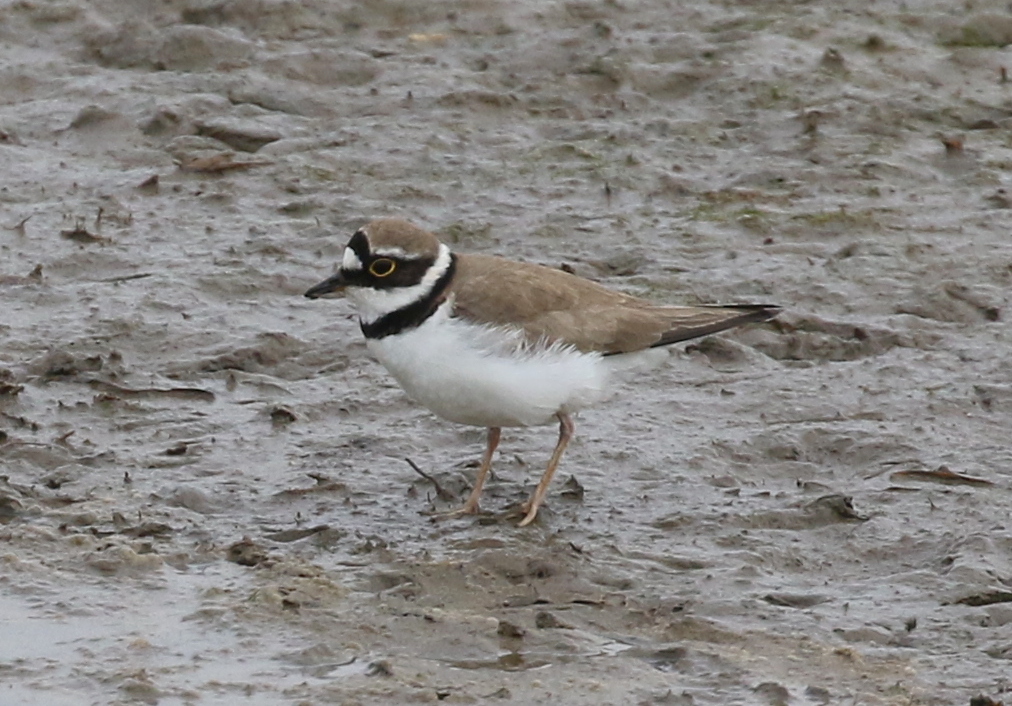
It flew back to the next island, but a few minutes later was back again, this time with a second Little Ringed Plover and a single Ringed Plover. We got a great look at them through the scope – particularly the golden yellow eye ring on the Little Ringed Plover and the orange legs and black-tipped orange bill on the Ringed Plover.
A Common Sandpiper was running around on the edge of one of the other islands, a migrant stopping off here on its way further north. Through the scope we could see the white notch running up between the grey of its breast and its wings.
There were two Little Gulls preening on the island further back. The next time we looked there were three, then four Little Gulls, all 1st summers. Two tiny Little Terns were next to them too – we could see their black-tipped yellow bills and white foreheads. The Little Gulls put on a great show for us, flying round in front of us, dipping down to the water surface or down onto the mud, so we could get a good look at the ‘w’ pattern on their upperwings.
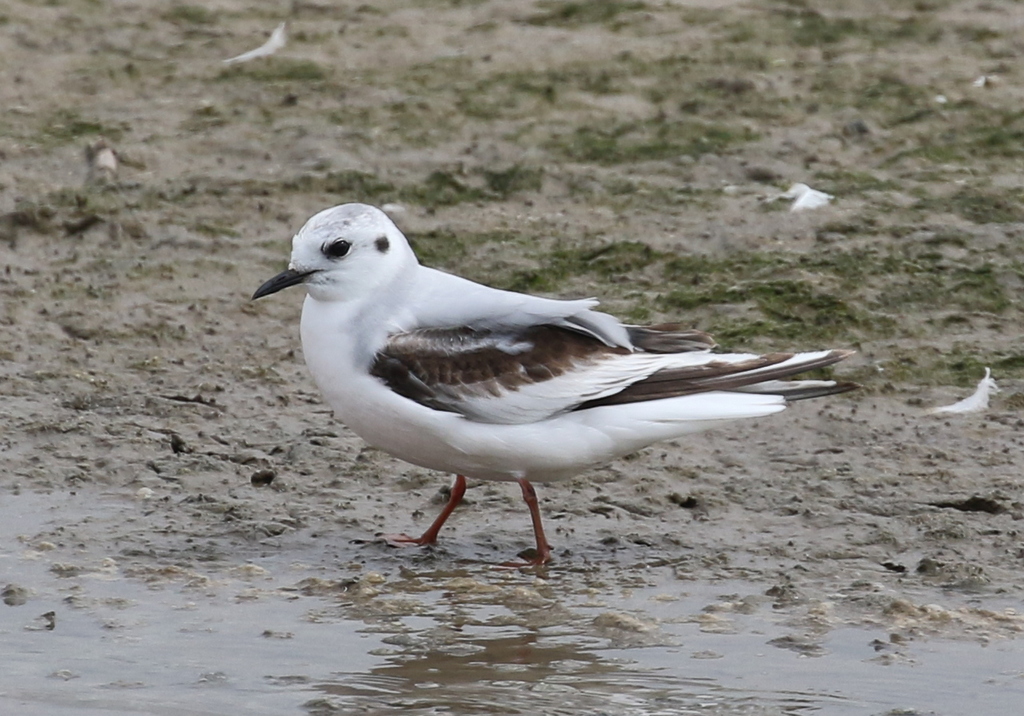
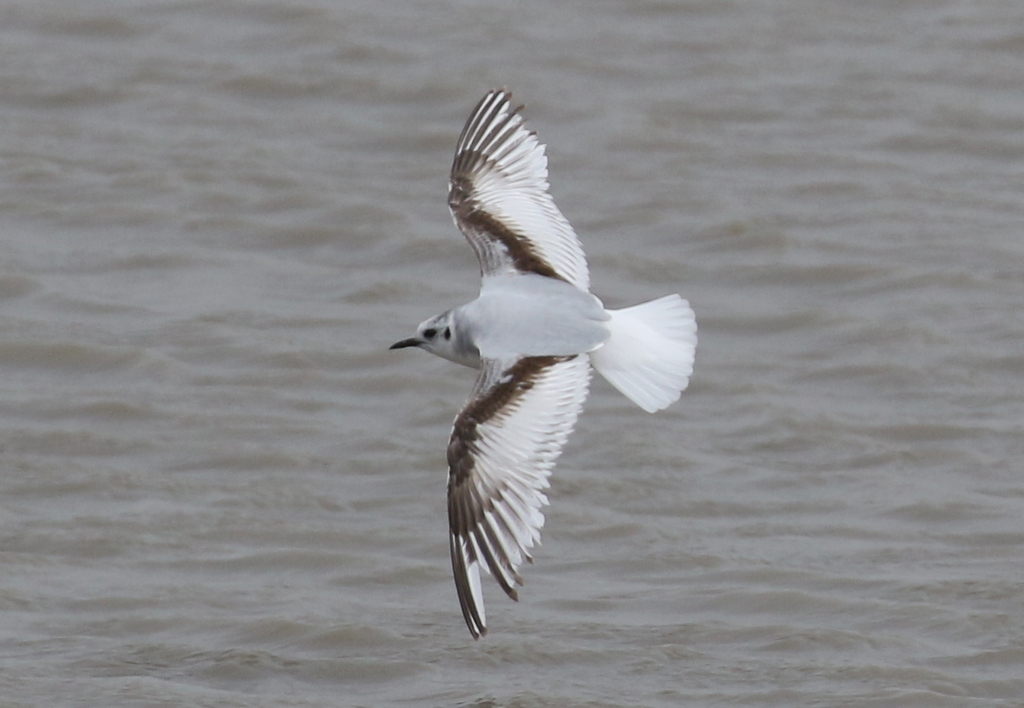
It was getting a bit chilly standing around out on the main path, so we eventually managed to tear ourselves away from all the birds here and head round to Parrinder Hide. It was not exactly tropical inside, but at least we were out of the wind.
There were more gulls on display here. We got a good look at a smart adult Mediterranean Gull preening on the island in front of the hide, next to several Black-headed Gulls for comparison. We could see the Mediterranean Gull’s jet black hood, contrasting white eyeliner, brighter red bill and legs and white wing tips. There were also lots of 1st summer Common Gulls on the island, plus a couple of Lesser Black-backed Gulls which dropped in to bathe and preen, and several Herring Gulls.
As well as the Little Terns, there were a couple of Common Terns on the Freshmarsh today too. A Sandwich Tern then helpfully dropped down onto the island where all the gulls were gathered. Through the scope, we could see its shaggy black crest and yellow-tipped black bill.
There are not many ducks on here now, with most of them having left for the summer. There were a few Gadwall and Shoveler, as well as a couple of broods of Mallard ducklings. A lone Teal was swimming around over the far side. A small group of Brent Geese dropped in from where they had been feeding out on the saltmarsh.
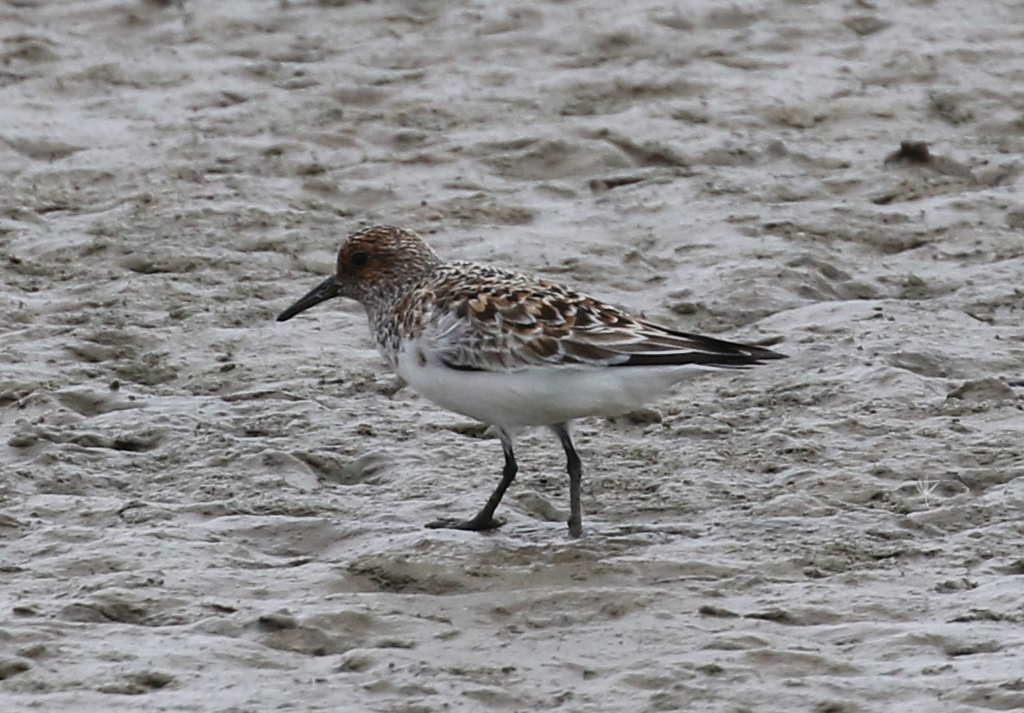
There were a few more waders visible from here too. We had seen a couple of Sanderling from out on the main path, but there were at least four out on the mud in front of the hide. They were looking very different from how we are most used to seeing Sanderling here, running around out on the beach in the winter in their silvery grey and white non-breeding attire. They were in breeding plumage now, much darker, peppered with black and rust in their upperparts, face and breast. They were causing lots of confusion amongst the other people in the hide!
There were several Ringed Plover out on the mud in front of the hide too. As they came close, we could see that one of them was noticeably larger, differently shaped with a bigger head, and also noticeably paler buff-brown on the upperparts.
A small number of Ringed Plover still breed along the coast here, as we had seen earlier at Snettisham. These are birds of the nominate race, hiaticula. At this time of year, we also get Tundra Ringed Plovers, of the race tundrae, which pass through on their way north to arctic Scandinavia. The Tundra Ringed Plovers are slightly smaller and darker – what we had here was a single local bird in with a flock of migrant tundrae.

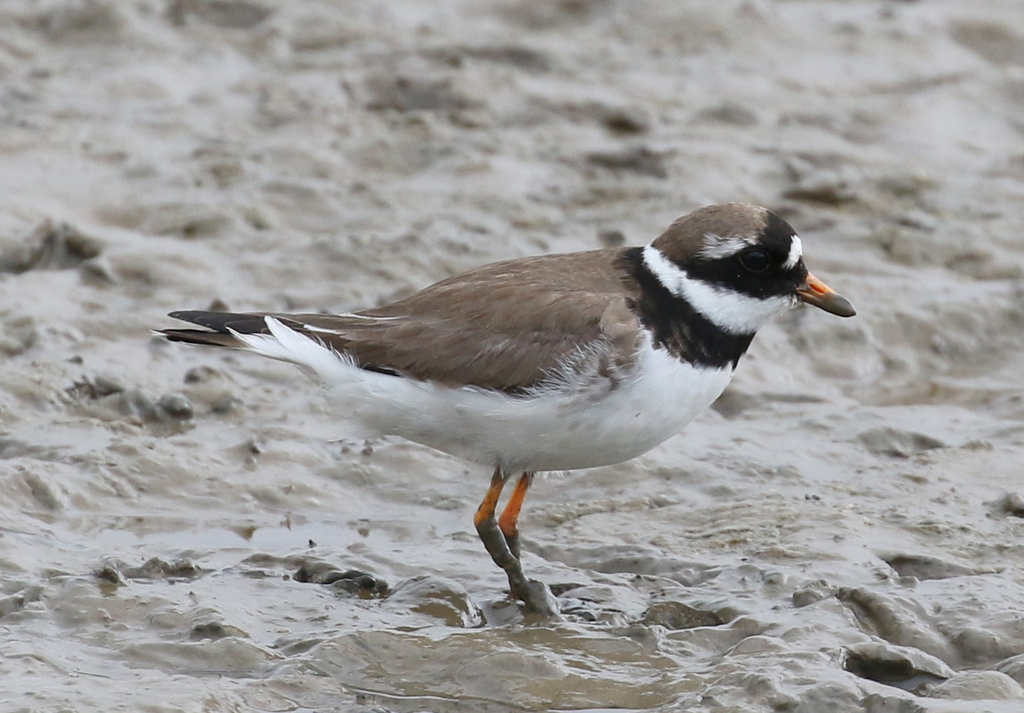
It was really interesting to have the opportunity to compare the two races of Ringed Plover side by side. There were also three Little Ringed Plovers along the edge of the reeds below the bank. The Common Sandpiper flew in too and started to work its way along the edge of the island in front of the hide.
We had a quick look out at Volunteer Marsh from the other side of Parrinder Hide. There has not been much on here lately, and this appeared to be the case again today. We did find four summer plumage Grey Plovers though, after a careful scan.
It was too windy to brave the beach today, so we started to make our way back. We swung round via Meadow Trail and out to Patsy’s Reedbed. There were four more Red-crested Pochard on here, three drakes and a female, and a Great Crested Grebe was a useful addition to the day’s list.
It was exposed and cold out at Patsy’s, so we didn’t stay long. We beat a hasty retreat, back to the warmth of the car. It was time to head for home.
















